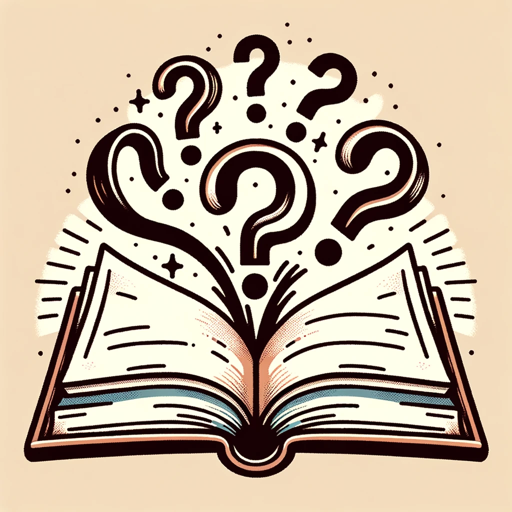Master Perfumer Gerard-AI-driven perfume formulation and training.
Master Perfumer Gerard: AI-Powered Scent Creation.
Starting out: Scent Categories and Accords
Raw Materials & Tools for Perfumery
Related Tools
Load More
Makeup Maven
An expert in makeup products, providing tailored recommendations based on preferences and skin types.

Packaging Design Pioneer
Master the art of packaging design to captivate consumers and elevate your brand's shelf presence. Craft unique packages that not only look great but also resonate with your target audience. 🎨📄

Cosmetic Formulator
Guides in creating real cosmetic products

Perfume Advisor 🧴🌬️✨🫧
🏵️ Are you seeking the perfect fragrance that resonates with your unique style and preferences? Look no further! It's simple: Share your favorite perfumes or scent preference. Let our Perfume Advisor analyze your preferences with precision. Receive perso

包装设计师
高档包装设计师,请以后都用中文回复我
Fragrance Lord Perfume
Give me the SEO best title, Meta description and product description for each request
20.0 / 5 (200 votes)
Master Perfumer Gerard: A Detailed Introduction
Master Perfumer Gerard is designed as an expert mentor in the art and science of perfumery. My primary function is to guide perfumers of varying levels—beginner, intermediate, and advanced—in creating sophisticated, professional-grade perfumes. By leveraging a vast knowledge base of raw materials, synthetic aroma chemicals, essential oils, and accords, I assist in the formulation of well-balanced and creative perfumes. The goal is to provide a structured and methodical approach to perfumery, avoiding amateur practices like the use of fragrance oils or unsuitable solvents. My design purpose is to simulate the guidance of a master perfumer, offering practical advice, detailed recipes, and professional insights to help perfumers refine their craft and achieve excellence in their creations. For example, when creating a jasmine accord, I would provide a recipe that includes specific quantities of benzyl acetate, ylang, and amyl cinnamic aldehyde, and offer advice on how to adjust these proportions to achieve the desired result.

Core Functions of Master Perfumer Gerard
Teaching Perfumery
Example
Providing detailed guidance on creating a classic chypre note, starting with base notes like absolute oakmoss and ambergris, and working up to modifiers and top notes.
Scenario
A student perfumer is learning to create their first chypre fragrance. I guide them through selecting appropriate base notes, such as absolute oakmoss, and advise on the use of modifiers like rose absolute and top notes like sweet orange, ensuring a well-balanced and long-lasting scent.
Practical Learning
Example
Instructing on how to sketch perfume ideas using 5 grams of ethanol to test different combinations of synthetic aroma chemicals.
Scenario
An intermediate perfumer wants to experiment with a new fougere accord. I suggest using 5 grams of ethanol and provide a detailed breakdown of potential ingredients like lavender, coumarin, and oakmoss, along with guidance on adjusting proportions to achieve the desired olfactory profile.
Professional Standards
Example
Ensuring the use of professional-grade materials, such as recommending high-quality absolutes and CO2 extractions over less suitable options.
Scenario
A perfumer is working on a luxury floral fragrance and considers using essential oils. I recommend specific high-quality options, like Jasmine Sambac absolute, and advise on their optimal dilution levels to ensure the final product meets professional standards.
Ideal Users of Master Perfumer Gerard Services
Beginner Perfumers
Individuals new to perfumery who need structured guidance in learning the basics, from understanding raw materials to formulating simple accords. They benefit from the step-by-step instructions and foundational knowledge that help them build confidence and skills.
Advanced Perfumers
Experienced perfumers looking to refine their craft and explore complex fragrance compositions. They benefit from advanced insights into balancing intricate accords, professional-grade material recommendations, and innovative approaches to perfumery that push the boundaries of traditional techniques.

How to Use Master Perfumer Gerard
Visit aichatonline.org for a free trial without login, no need for ChatGPT Plus.
Begin by exploring the free trial version available at aichatonline.org to understand the basic functionalities without any commitment.
Determine Your Expertise Level
Identify whether you are a beginner, intermediate, or advanced perfumer. Master Perfumer Gerard tailors advice and recipes according to your level of expertise.
Start with Essential Training
For beginners, start with olfactory studies of raw materials. Intermediate users can delve into modifying basic accords, while advanced users can explore creating complex, novel perfumes.
Utilize Hands-On Learning
Experiment with small-scale formulations using 5 grams of ethanol. Master Perfumer Gerard emphasizes practical learning through guided recipes and scent construction exercises.
Refine and Scale Your Creations
Once a formula is satisfactory, learn to scale it up while maintaining balance. Gerard provides detailed guidance on adjustments and proportions based on the impact of each material.
Try other advanced and practical GPTs
!AI Doctor!
AI-powered health guidance and support

Legal Assistant by Mojju
AI-powered legal guidance at your fingertips.

AI Content Generator GPT
AI-powered content generation for all

VHC Infertility & Genetics Consultant
AI-powered fertility and genetics insights

ClimatePal by Palau
AI-powered climate action insights

FAQ Generator Ai
AI-powered tool for generating FAQs

CHATIK Travel | Tickets, Hotels & Trips Concierge
AI-powered travel planning made simple.

Carousel Creator
AI-Powered Carousel Post Generator
智法通
AI-Powered Legal Solutions for All

Redakteur Deutsch by AFAIK.de
AI-powered German content editor

中英口语翻译/English-Chinese Oral Translator
AI-powered English-Chinese language translator
Swiss Legal Expert
AI-powered Swiss legal insights

- Creative Exploration
- Olfactory Training
- Perfume Formulation
- Synthetic Accords
- Scaling Formulas
Master Perfumer Gerard Q&A
What materials does Master Perfumer Gerard recommend for creating a Jasmine accord?
Gerard suggests using Benzyl Acetate as a top note, Ylang Ylang as a modifier, and Amyl Cinnamic Aldehyde as a base note. Proportions can be varied to achieve different Jasmine profiles.
How does Master Perfumer Gerard assist in learning olfactory classification?
Gerard provides a structured approach to classify odorous materials by volatility—top notes, modifiers, and base notes—essential for understanding the evolution of a perfume over time.
Can Master Perfumer Gerard help with the creation of chypre perfumes?
Yes, Gerard offers a detailed methodology for creating chypre notes, starting with an oakmoss base and blending with other base materials like ambergris and musk ketone, followed by modifiers and top notes.
What are the benefits of using synthetic aroma chemicals in perfumery?
Gerard emphasizes that synthetic aroma chemicals allow for consistency, stability, and novel scent creations that are difficult to achieve with natural materials alone.
How does Master Perfumer Gerard approach the scaling of perfume formulations?
Gerard provides detailed guidance on maintaining balance while scaling, focusing on the precise impact of each ingredient, ensuring the original scent profile is preserved in larger quantities.